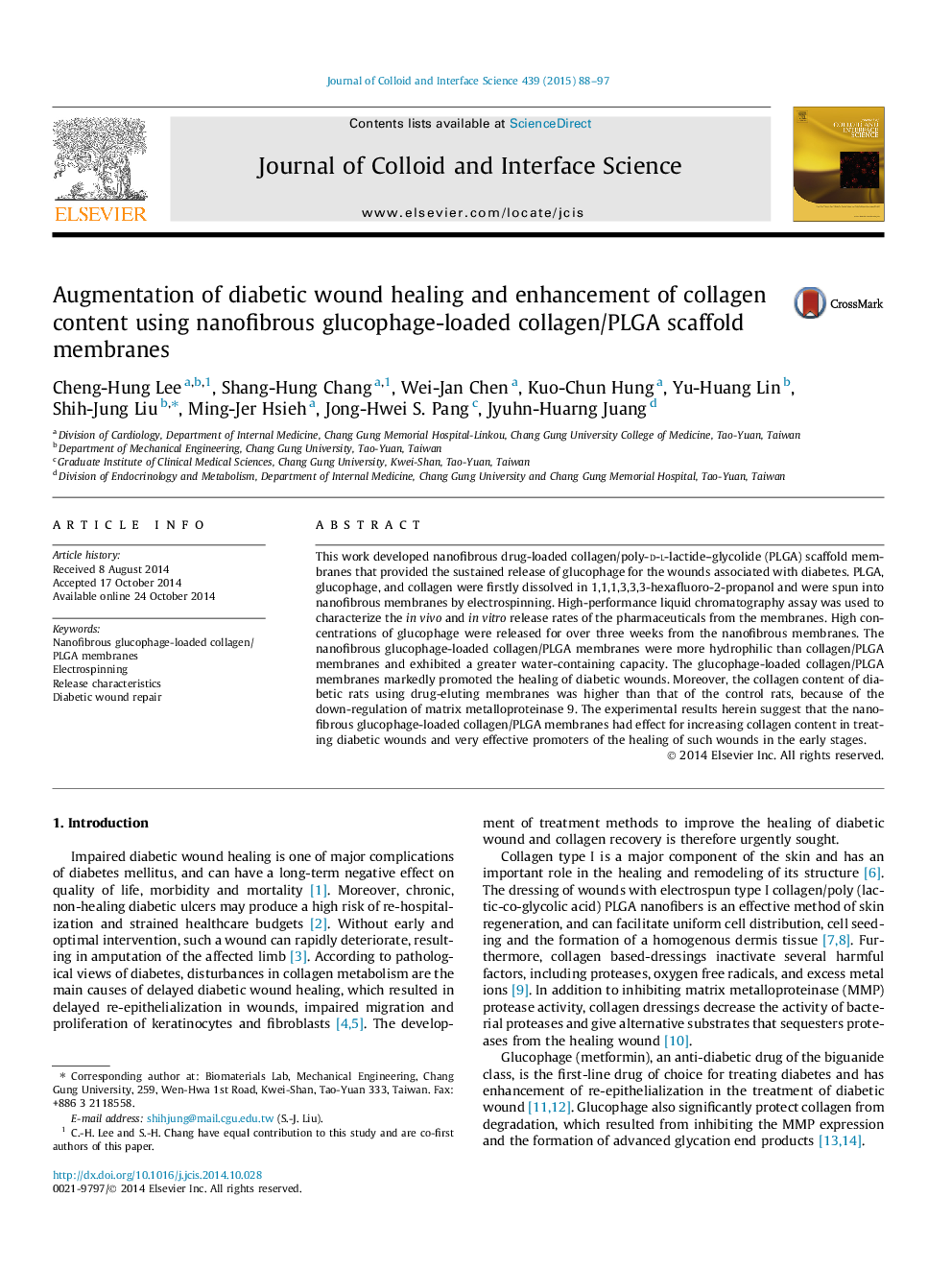| Article ID | Journal | Published Year | Pages | File Type |
|---|---|---|---|---|
| 606886 | Journal of Colloid and Interface Science | 2015 | 10 Pages |
•Nanofibrous membranes released high concentrations of glucophage for three weeks.•Increasing water-containing capacity in glucophage-loaded collagen/PLGA membranes.•Increasing collagen content by glucophage-loaded collagen/PLGA scaffold.•An effective tissue-engineering scaffold for regenerating diabetic wounds.
This work developed nanofibrous drug-loaded collagen/poly-d-l-lactide–glycolide (PLGA) scaffold membranes that provided the sustained release of glucophage for the wounds associated with diabetes. PLGA, glucophage, and collagen were firstly dissolved in 1,1,1,3,3,3-hexafluoro-2-propanol and were spun into nanofibrous membranes by electrospinning. High-performance liquid chromatography assay was used to characterize the in vivo and in vitro release rates of the pharmaceuticals from the membranes. High concentrations of glucophage were released for over three weeks from the nanofibrous membranes. The nanofibrous glucophage-loaded collagen/PLGA membranes were more hydrophilic than collagen/PLGA membranes and exhibited a greater water-containing capacity. The glucophage-loaded collagen/PLGA membranes markedly promoted the healing of diabetic wounds. Moreover, the collagen content of diabetic rats using drug-eluting membranes was higher than that of the control rats, because of the down-regulation of matrix metalloproteinase 9. The experimental results herein suggest that the nanofibrous glucophage-loaded collagen/PLGA membranes had effect for increasing collagen content in treating diabetic wounds and very effective promoters of the healing of such wounds in the early stages.
Graphical abstractFigure optionsDownload full-size imageDownload high-quality image (68 K)Download as PowerPoint slide
